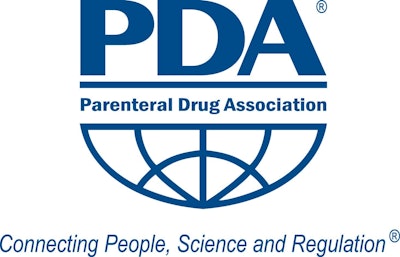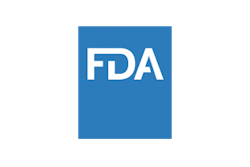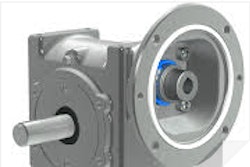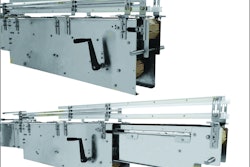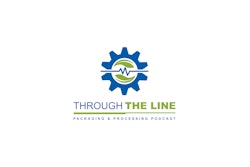In the competitive and complex world of contract manufacturing, finding the right business relationships can be challenging. Manufacturers are looking for reliability and quality at the right price. Contract facilities are expected to juggle multiple clients that sometimes request varying quality systems and contract requirements. Both sides are looking for a long-term partnership that will advance their business interests and meet patient needs.
Regulators have been explicit in guidance and regulation that they expect these two groups to have business relationships with clearly defined roles and responsibilities in addition to establishing communication channel procedures for addressing quality concerns. As stated in the 2016 FDA Guidance Contract Manufacturing Arrangements for Drugs: Quality Agreements, “For both owners and contract facilities that conduct manufacturing operations, CGMP includes the implementation of oversight and controls over the manufacture of drugs to ensure quality.” The responsibilities for patient safety and product quality remain in place just as they would when the manufacturing and testing operation is completed in-house. A firm can outsource the operation, but not the quality or responsibility.
Per ICH Q10 Pharmaceutical Quality System, one of the processes required is to “assess prior to outsourcing the suitability and competence of the other party to carry out the activity or provide the material.” So how do you make a good match and find the partner that will be a good fit for your operation?
Quality Culture Assessment
One way is to look closely at quality culture – both your own and that of your prospective client/customer. PDA has recently launched a Quality Culture Assessment Program that provides tools, training, and information to let you measure the quality culture of a manufacturing site. It was developed by a team of industry experts and designed to be used as an internal self-assessment or externally for a CMO you are considering. Some CMOs have completed the self-assessment proactively in order to demonstrate their awareness of the importance of quality culture to potential clients.
The program begins with training on a comprehensive assessment tool with a five-point scale for each of the identified 27 metrics that roll up into 12 attributes of quality culture. This tool was developed with input from MHRA (Medicines and Healthcare products Regulatory Agency) and FDA compliance and surveillance staff. The first iteration was extensively piloted with 43 manufacturing sites in the U.S., Asia and Europe.
The results are blinded and maintained by PDA in a confidential benchmarking database. Keying off the assessment, the program includes the opportunity to compare your site results against those of your industry peers. PDA also offers an all-staff behavior survey to provide additional insights to your site leadership on current attitudes, behaviors, and beliefs. Once enrolled, a site joins a community of users that have completed assessments and embarked on a journey to improve quality culture.
As part of the rollout and launch of this culture assessment program, PDA has developed a case study for training that is built on the premise of a firm evaluating a potential CMO. In the scenario, instructors act as fictional leaders and employees of the CMO plant site while students experience the role of site assessors collecting data and completing the culture evaluation.
This hands-on learning approach has been well-received by industry participants as well as FDA investigators, CDER surveillance staff, and MHRA assessors. The simulation of a CMO site assessment combines practical learning with the opportunity for dialogue and calibration of results.
Measuring quality culture
PDA began research into measuring quality culture in 2013 as an outgrowth of its Metrics Task Force. Several members felt strongly that no matter which metrics might be selected by FDA for reporting or used internally for manufacturing operational decisions, the underlying quality culture – beliefs, values, and behaviors of employees – is the key to establishing and maintaining an operation which reliably produces high-quality products with minimal regulatory oversight and meaningful quality metrics.
PDA published its initial research in 2015, which demonstrated a positive correlation between desired behaviors of a good quality culture and presence of mature quality system attributes (Patel, et al. 2015).These maturity attributes extend beyond basic GMPs as defined by regulations and include approaches described in ICH Q8, Q9, Q10, Q11 (such as quality risk management, quality plans, and management reviews), as well as attributes of complementary business systems such as safety planning, rewards, recognition, training, and development.
In his presentation at the 2017 PDA/FDA Joint Regulatory Conference, Dr. Thomas Friedli from the University of St. Gallen confirmed this correlation. Another conclusion of the 2015 PDA paper was that senior leaders have a more optimistic view of the current state of quality culture when compared to the viewpoints of the general employee population. Research by Forbes and ASQ (American Society for Quality) found similar results, concluding that, while three in four executives say their organization has a culture of quality, less than half of quality professionals agree(ASQ/Forbes 2014).
Standardization
Standardization is a key design parameter of the PDA Quality Culture Metrics model: It allows for clear communication with language, criteria, and metrics to evaluate sites and communicate results either between CMO and Client or between site leadership and staff. Standardization also allows for meaningful benchmarking of resulting metrics, including comparisons to results from other CMO sites or results from firms producing similar product types.
The PDA tool and approach put a framework around something that has been subjectively evaluated in the past. The metrics and attributes built into the tool were selected based on the original research, industry input at PDA Quality Culture and Metrics conferences, and feedback from the pilot participants.
This standardization provides a common language and criteria for CMOs and clients to better understand how they might work together and where there are gaps or differences in their underlying approaches.
Better understanding will inform quality agreements and business contracts, leading to better outcomes for both the business and the patients. It is the goal of the PDA Quality Culture Task Force to promote Quality Culture and its understanding, assessment, and improvement within the pharmaceutical, biopharmaceutical, and device industries by providing tools and knowledge to enable continuous improvement. The ideal state is to ensure that a quality mindset and behaviors are imbedded into the daily work of all functions resulting in positive patient outcomes.
Works Cited
Culture of Quality: Accelerating Growth and Performance in the Enterprise.ASQ/Forbes.ASQ Quality Resources/Research, 2014.
Quality Culture Survey Report.Patel, Pritesh, Denyse Baker, Rick Burdick, Cylia Chen, Jonathon Hill, Morgan Holland, and Anil Sawant.PDA Journal of Pharmaceutical Science and Technology, 2015.
The Impact of Quality Practices and Quality Behavior on Plant Performance: Redefining the Importance of Culture. Dr. Thomas Friedli. Sept 12, 2017; Washington, D.C. Parenteral Drug Assn.Presented at the 2017 PDA/FDA Joint Regulatory Conference
